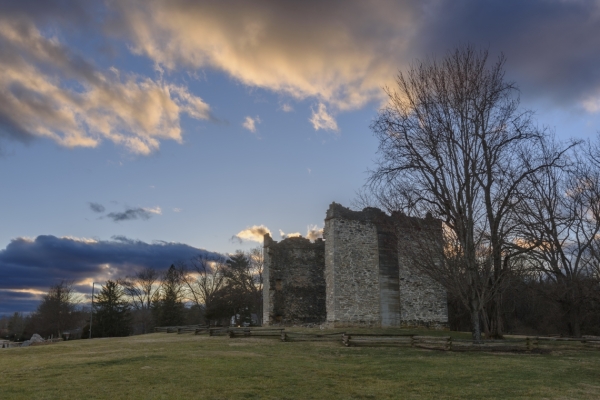
W&L Students to Host Archaeological Commemorative Event The April 6 gathering marks the restoration of “The Foundation” on the university’s campus, originally part of the historic Liberty Hall Academy property.
The Sociology and Anthropology Department at Washington and Lee University will host a gathering to mark the restoration of “The Foundation” on the university’s campus at 11 a.m. on April 6. The event has been organized by the collective memory course taught by Alison Bell, professor of anthropology, and aims to commemorate the layered history of the site and its place in W&L’s history.
The Foundation represents the remains of the stone building formerly known as the steward’s house and joins The Spring and The Ruins as interpretive sites of memory for Liberty Hall Academy, allowing students and visitors to better envision the eighteenth-century campus as a bustling place with several structures — and not just one isolated stone schoolhouse.
“As a historical archaeologist, I’m always thinking about artifacts, buildings and landscapes, particularly as they relate to questions about what’s present or what’s absent, or what’s remembered and what has been forgotten or erased,” Bell said.
The former steward’s house was built in 1793 and was the place where Liberty Hall students took their meals. When the main academy building (The Ruins) burned in 1803 and the institution moved to its current location, the steward’s house became part of a plantation on which enslaved people labored and lived into the 1860s. In the 1970s, W&L archaeology faculty and students excavated parts of the Liberty Hall campus landscape, including the steward’s house, and found thousands of artifacts, many of which dated to the academy era and the plantation era. In 2023, W&L began restoring the house foundation to the condition in which archaeologists had found it in the 1970s.
Naming the restored structure of the steward’s house The Foundation reflects the class’s hope that people might think about ways that this land and the people who have lived on it are foundational to the university community as it exists today. Bell and her students felt the name seemed both neutral and thought-provoking, capturing the site’s layered history as a campus building for 10 years, part of a plantation for 60 years, and belonging to the homelands of American Indians, specifically the Monacan people and their ancestors, for thousands of years.
“One goal with the event is to respectfully acknowledge a multi-layered history, to bring all parts of the landscape’s past (back) into our collective memory,” Bell said. “As we’ve been learning in class, history is not ‘either or, but both and more.”
 Liberty Hall Ruins
Liberty Hall Ruins

You must be logged in to post a comment.